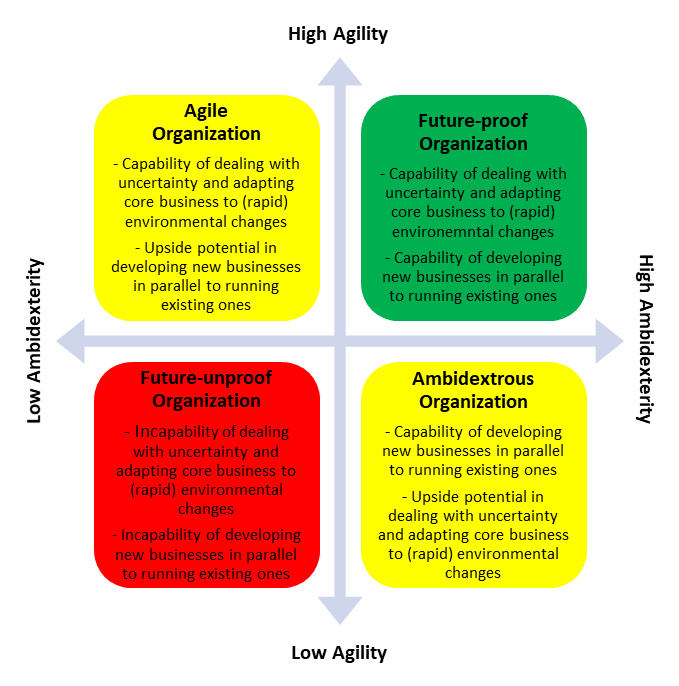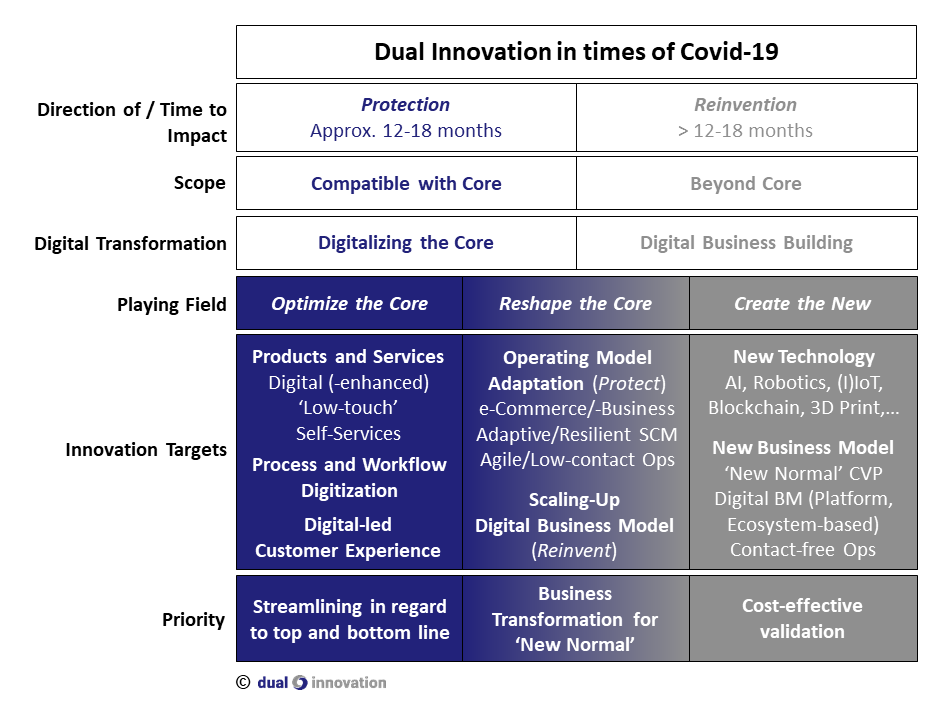From frequent discussions and readings I have come to realize the following: Agility and Ambidexterity can be considered two distinct organizational capabilities and design aspects for future-proof companies (-to-be) that often get mixed up or even confused:
Agility: Organizational capability of dealing with uncertainty and adapting a company’s core business to (rapid) changes in the market environment.
Ambidexterity: Organizational capability of developing new business (Exploration) running existing business (Exploitation) in parallel.
Both capabilities may exhibit some overlap, yet can basically be considered independent from each other: a company can be highly agile while lacking ambidexterity and vice versa.
By characterizing companies along these two dimensions, four basic types of organizations can be distinguished:
- Future-proof organization: combining Agility with Ambidexterity
- Agile organization: combining Agility with upside potential in Ambidexterity
- Ambidextrous organization: combining Ambidexterity with upside potential in Agility
- Future-unproof organization: lacking both Agility and Ambidexterity
Case in point: Latest research from McKinsey found that companies which ranked higher on managing the impact of the Covid-19 crisis were also those with agile practices more deeply embedded in their enterprise operating models. However, solely be(com)ing agile proves not enough: beyond protecting the existing core business by agilizing the operating model (among other measures) on the short to mid term, flourishing on the mid to long term also calls for (potentially) reinventing the entire business model in accordance with a post-crisis new normal (see our proposed Dual Innovation response framework below).
Takeaway
Facing increasing uncertainty, pace of change and disruption in combination with steadily decreasing life times of operating and business models, future-proof companies (-to-be) are inevitably forced to build up and combine both agile and ambidextrous capabilities. Agility and Ambidexterity in tandem enable organizations to successfully protect core businesses (Defense) while coming up with future businesses, meant to extend or replace existing ones (Offense).
Companies which lack both organizational key capabilities must be regarded as future-unproof. They risk to perish sooner or later – unless they start building them up with full effort and speed.










No comments yet.